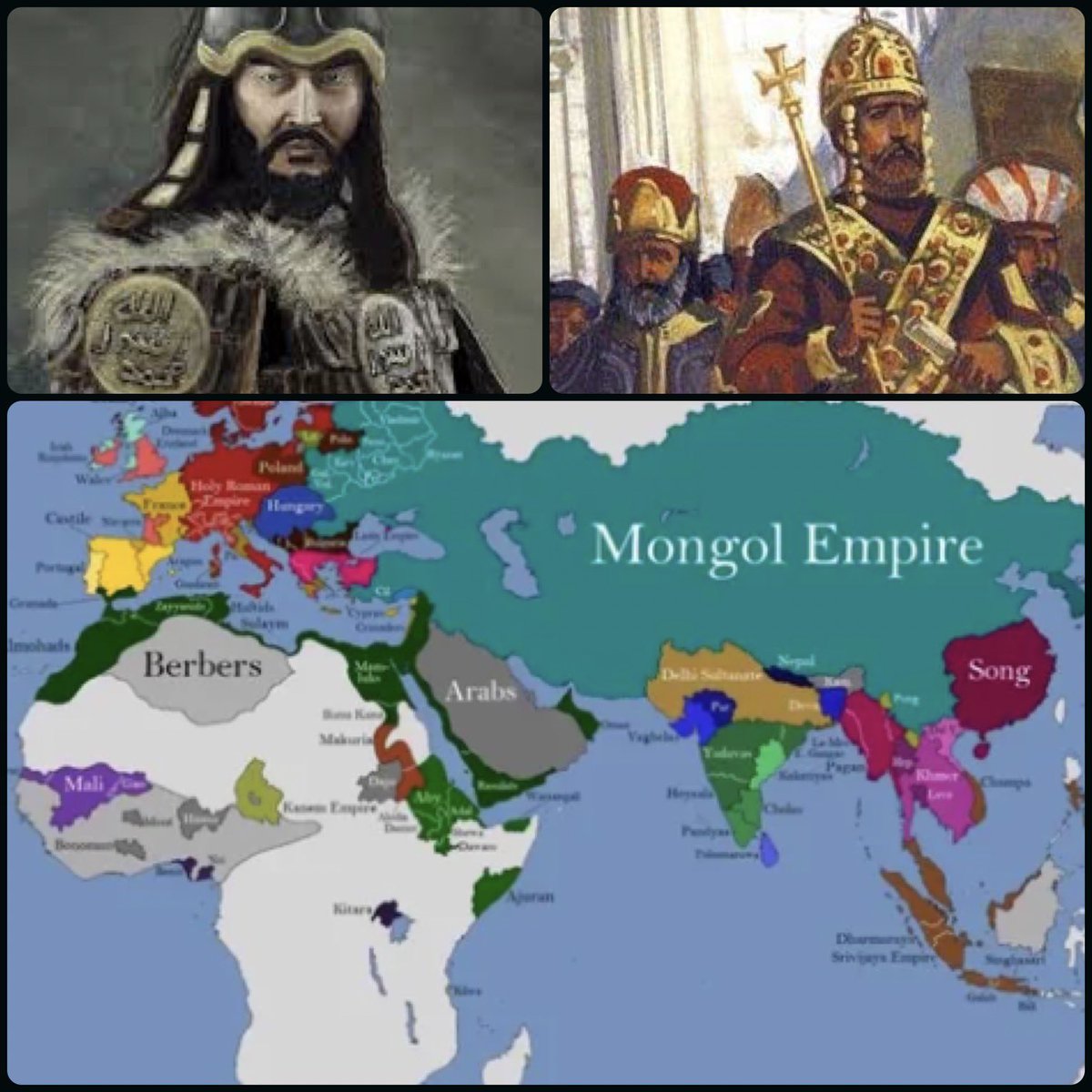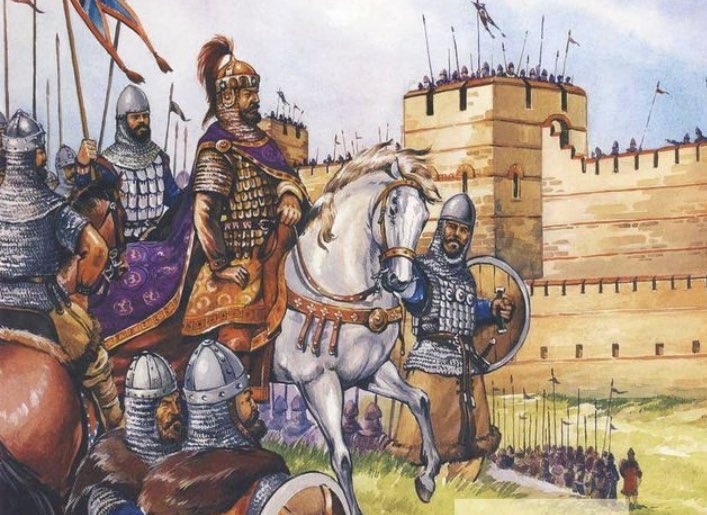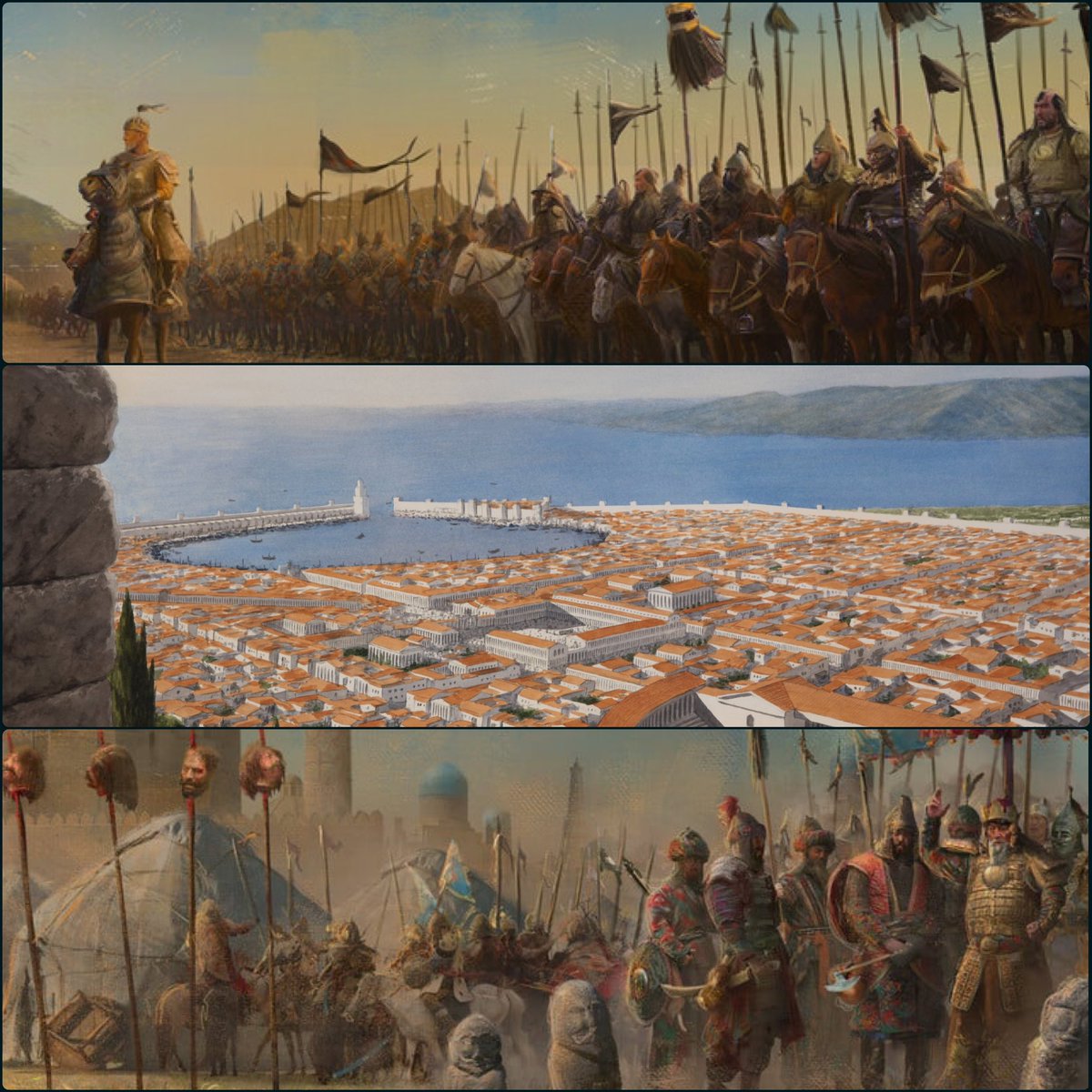The amazing story of a 14th century Turkish-Byzantine friendship between Emperor John VI Kantakouzenos & Umur Bey of Aydin is unique. Starting with a meeting where John VI was referred to as a “miscreant Christian” & Umur as a “barbarian” -but Umur would help John several times🧵 

The Aydin Beylik was one of many small domains which had capitalized on Byzantine weakness after it shifted its focus to Europe in the 2nd half of the 13th century. They seized Smyrna(Izmir) in 1329. Umur was unique though. Despite being known as a ghazi he worked with the Romans 

This was a time when Anatolia was rapidly falling, by 1340 almost nothing was left except a very small isolated enclave at Philadelphia, which the Emperor could hardly assert control of. John VI met Umur first when Andronikos III was still emperor in 1335, near Chios. 

Umur had helped the Romans oust some Genoese from Lesbos. The historian Gregoras wrote that Umur had good character & in fact was not even totally without “Hellenic culture” - the Turkish writer Enveri says Umur was offered a daughter by John, but declined as they were “brothers” 

In 1337, John wrote to his friend Umur asking for 2,000 warriors to help fight the Albanians. Umur sent his “brother” the soldiers, and a joint Roman-Turkish force left from Thessaloniki and surprised the Albanian raiders. The Turkish soldiers took much plunder from the Albanians 

John then sent the Turkish soldiers back to Umur, with their plunder & slaves they had captured, and set out subduing the rogue province of Epirus. But then Andronikos died, & John was by his side. He appointed John Kantakouzenos to guard his son John Palaiologos until adulthood 

This led to civil war, one which Kantakouzenos referred to as “the worst civil war the Romans had ever known…reducing the great Empire of the Romans to a feeble shadow of its former self.” The map below shows the breakdown of the sides. But John also had Umur Bey to call upon. 

The regency council which formed against the wishes of Andronikos III and against John VI would ruin the stable European position of the Romans. Kantakouzenos would have to deal with tough circumstances, as he did not control the the well defended wealthy city of Constantinople. 

The Bulgarians were called to help the regency council against John in 1342, surrounding John at Didymoteichon in Thrace. John sent word to his Turkish brother Umur, who promptly sent “380 ships & 29,000 men” from Anatolia. The numbers may be exaggerated but the Bulgarians fled 

He never actually was able to see John as bitter winter forced his army to leave. The fact John could call in such an ally also led to many local Romans joining his side. John also forged a relationship with Orhan of the Ottoman Beylik, who sent him troops in his aid as well 

Umur Bey had put actions to his words, he clearly must have truly loved and respected John Kantakouzenos in order to risk sending him men time after time. To reward his men for the expedition, Umur raided the Byzantine lands loyal to the regency council in Thrace. 

In 1345 Umur helped again-“accompanied by Suleiman, the son of the Emir of Lydia. Together they brought an army allegedly of 20,000 horsemen.” They fought Bulgarians, then a Slavic band under Momcilo at the battle of Peritheorion. John then was faced with a choice
The Serbian king Stefan Dusan attacked Serres, John wanted to use his Turkish allies to fight him. But Apokaukos, a main leader of the regency council in Constantinople was murdered. Umur and John’s Roman supporters persuaded him to instead go to Constantinople. 

But then John’s Turkish allies had to leave. John had to retreat, he couldn’t besiege them capital with a tiny army. He would have to turn to his new ally, Orhan. Ottoman ambassadors came to John asking for his daughter as a bride to secure their alliance.
John VI married his daughter to Orhan to secure an alliance, which would in theory make Orhan a valuable ally. John asked his officers, and then he consulted his friend Umur. Umur was not an ally of Orhan, but he was not against it. Theodora Kantakouzenos was then given to Orhan 

This would help win the war - but also disastrously bring the Ottomans into the Balkan world which they would eventually conquer. John became the regent Emperor in 1347, won the civil war & became Emperor. Though trouble returned years later. But for Umur Bey? Things ended badly! 

Westerners did not see Umur so positively, John had to explain his usage of Turkish troops to the Pope. Italian states had no interest in a Turkish naval power like Aydin threatening them. John had to give nominal support to the crusaders to avoid being a target himself. 

It’s sad to say that it was kind of a betrayal of Umur, even though Byzantine troops did not participate. He could not help Umur the way he had helped him in his dark times. Umur died in the defense of Smyrna against the crusaders. Gregoras said his death made John very upset 

The results of the civil war were terrible. I find myself wondering what if John had been recognized as the true Emperor? This brotherly friendship with Umur Bey could have changed history. Perhaps the Romans and Umur could have campaigned together in Anatolia and changed history
Source for this post - The Reluctant Emperor: A Biography of John Cantacuzene, Byzantine Emperor and Monk, c. 1295-1383 by Donald M. Nicol
• • •
Missing some Tweet in this thread? You can try to
force a refresh






















